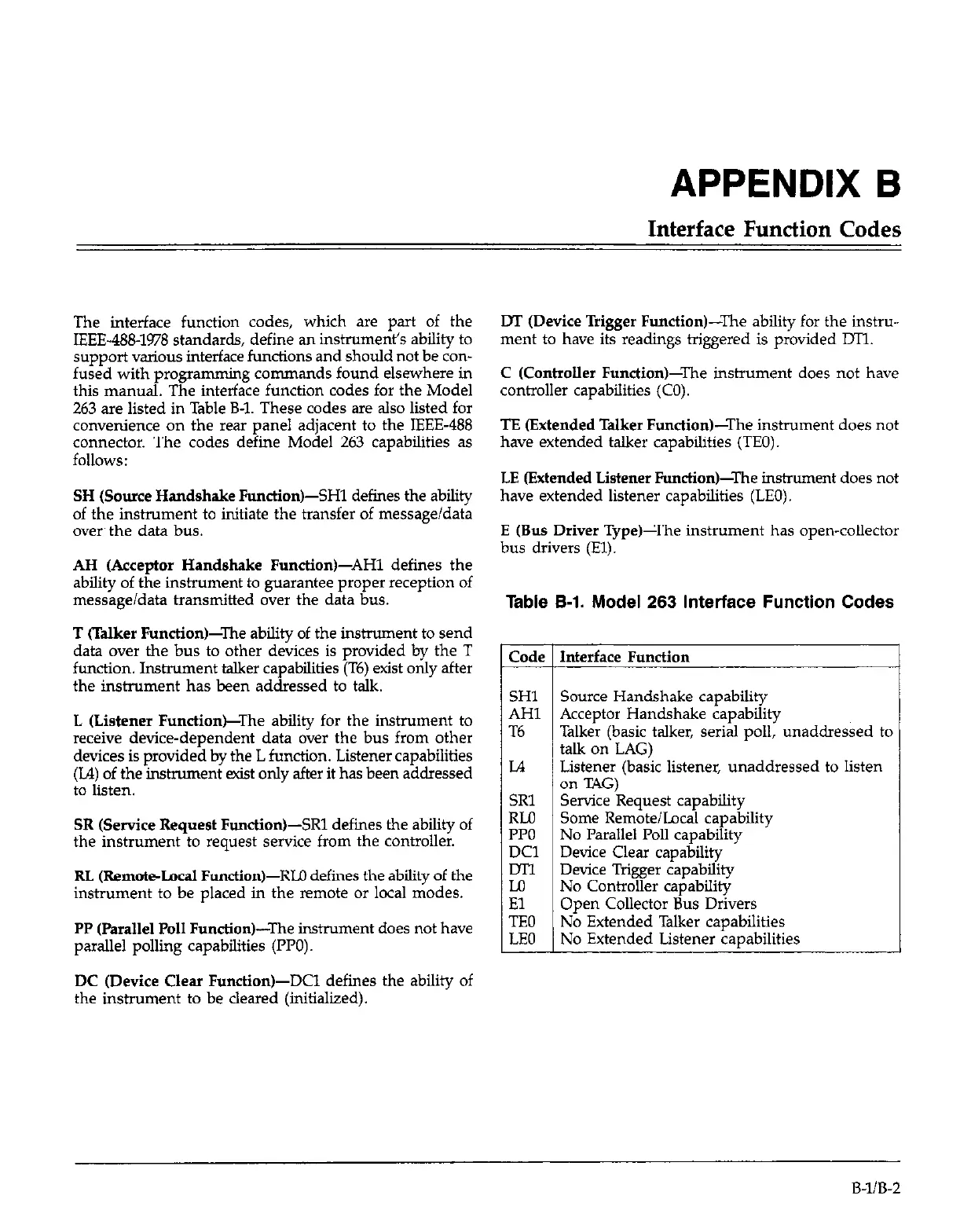APPENDIX B
Interface Function Codes
Tlw interface function codes, which are part of the
IEEE-488-1978 standards, define an instrument’s ability to
support various interface functions and should not be con-
fused with programming commands found elsewhere in
this manual. The interface function codes for the Model
263 are listed in Table B-l. These codes are also listed for
convenience on the rear panel adjacent to the IEEE-488
connector. The
codes
define Model 263 capabilities as
follows:
SH (Source Handshake Function)-SHl defines the abiity
of the instrument to initiate the transfer of message/data
over the data bus.
AH (Acceptor Handshake Function)-AH1 defines the
ability of the instrument to guarantee proper reception of
message/data transmitted over the data bus.
T (Talker Function)-The ability of the instrument to send
data over the bus to other devices is provided by the T
function. Instrument talker capabilities (T6) exist only after
the instrument has been addressed to talk.
L (Listener Function)-The ability for the instrument to
receive device-dependent data over the bus from other
devices is provided by the L function. Listener capabilities
(L4) of the instrument exist only after it has been addressed
to listen.
SR (Service Request Function)-SRl defines the ability of
the instrument to request service from the controller.
RL (Remot&maI Function)-RUI defines the ability of the
instrument to be placed in the remote or local modes.
PP (Parallel Poll Function)-The instrument does not have
parallel polling capabilities (PI’O).
DC (Device Clear Function)-DC1 defies the ability of
the instrument to be cleared (initialized).
DT (Device Trigger Function)-The ability for the instm-
ment to have its readings triggered is provided DTl.
C (Controller Function)-The instrument does not have
controller capabilities (CO).
TE (Extended Talker Function)-The instrument does not
have extended talker capabilities (TEO).
LE (Extended Listener Function)-The instrument does not
have extended listener capabilities (LEO).
E (Bus Driver Type)-The instrument has open-collector
bus drivers (El).
Table B-l. Model 263 Interface Function Codes
Code Interface Function
SHl Source Handshake capability
AH1 Acceptor Handshake capability
T6 Talker (basic talker, serial poll, unaddressed to
talk on LAG)
LA Listener (basic listener, unaddressed to listen
on TAG)
SRl Service Request capability
RLO Some Remote/Local capability
PPO No Parallel Poll capabilitv
DC1 Device Clear cap&l&y ’
Ml Device Trigger capability
E
No Controller capability
Open Collector Bus Drivers
TEO No Extended Talker capabilities
LEO No Extended Listener capabilities
B-l/B-2

